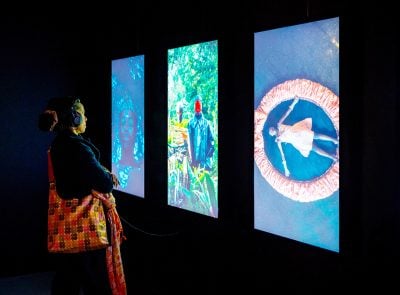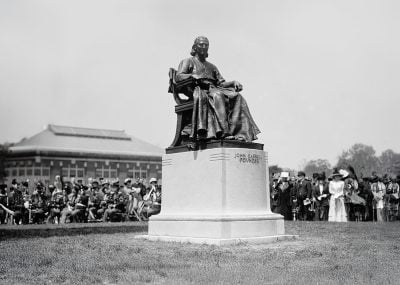Ethiopia, like many other African countries, is increasingly turning to the Chinese, rather than the West, to construct its major infrastructure projects, such as railways. Two projects are currently under way, one to link the capital, Addis Ababa, to Djibouti and the other to provide a light railway system for the city. James Jeffrey describes how Western companies are losing out on good deals because of a lethargic and outdated view of Africa.
In the heart of Addis Ababa, the statue of 19th century Emperor Menelik II, stands watch over construction of the Light Rail Transit (LRT), part of Ethiopia’s grand plan to create a national railway infrastructure for the 21st century.
2,000km (1,243 miles) of new railway track will be also be laid as the first phase of an plan to create a 5,000km nationwide rail network. It is sorely needed. Since 2008, there hasn’t been a fully operational railway line in a country the size of France and Spain combined.
Chinese companies are spearheading this massive undertaking and their business enterprise in Ethiopia – as in many African countries – contrasts strikingly with the total lack of involvement and investment by companies from Western countries such as the UK. Ethiopia even approached UK for assistance at the beginning, and designs for its new railway were based on official UK railway industry standards. The centrepiece of the new rail network is the planned Chinese-built electrified railway between Addis Ababa and the neighbouring country of Djibouti.
So far about a quarter of preparatory works have been completed on this key route. Once completed, it will enable landlocked Ethiopia to access Djibouti port on the Horn of Africa coast and reduce its dependency on gas-guzzling lorries clogging its roads. The first track is planned to be laid by June 2014.
Construction of the LRT – similar to London’s Docklands Light Railway – will give the capital its first mass transit system and transform mobility in a city where nearly 90% of the population gets around on foot or by squeezing into buses and taxis. Both rail projects which began in early 2012, are joint ventures between the Ethiopian government and Chinese companies that successfully bid for the $3.3bn Addis-Djibouti contract and the $500m LRT contract. It is hoped that one legacy of new Chinese-built railways will be a massive boost to Ethiopia’s commercial exports and economic growth.
“Ethiopia became poor because it wasn’t connected,” says Getachew Betru, general manager of Ethiopian Railways Corporation (ERC), which is overseeing the railway and LRT projects. The country is in transition from a primarily agrarian economic model to an industrial one. This is a key component of the government’s first five-year Growth and Transformation Plan set to culminate in 2015. A new railway network would be an enormous boost to future projects and efforts to bolster the economy and achieve the government’s aim of transforming Ethiopia into a vibrant, middle-income economy by 2025.
In the meantime Ethiopia still requires foreign aid. It receives approximately $1.5bn annually from the UK, making it the UK’s No 1 overseas aid recipient. But this donor-recipient model does not work, Getachew says, rather it is business that works.
The Addis-Djibouti corridor has always been an important strategic route for Ethiopia, serving both domestic and foreign trade traffic, now totalling millions of tonnes a year and ever growing. The new 781km route eastward to Djibouti – offering the shortest distance from Addis Ababa to a seaport – is expected to haul 11.2m tonnes of freight in its first year of operation in 2016, rising to 24.9m tonnes by 2025.
Passenger trains are also planned to run on the line, which will wind around Ethiopia’s highland plateau and vertiginous topography before dropping 2,500 metres to sea level. Trains will travel at 120 kph through a landscape of camel herds and dust devils, and past the lapping waters of Lake Basaka. Dramatic views will greet passengers when passing over the deep Awash River gorge toward the Djibouti border.
Ethiopia’s varied terrain poses challenges for railways engineers. They will have to come up with ingenious solutions for both phase one and phase two, constructing railway lines from Addis Ababa to Axum in the north and to Moyale in the south on the border with Kenya. But the benefits should be worth the pain, Getachew says. The new railway network will provide relief to rural areas in times of drought, link Ethiopia’s economic hubs, boost tourism, and benefit other countries like South Sudan that wants to export its oil via Djibouti’s port.
Want to continue reading? Subscribe today.
You've read all your free articles for this month! Subscribe now to enjoy full access to our content.
Digital Monthly
£8.00 / month
Receive full unlimited access to our articles, opinions, podcasts and more.
Digital Yearly
£70.00 / year
Our best value offer - save £26 and gain access to all of our digital content for an entire year!
 Sign in with Google
Sign in with Google 


